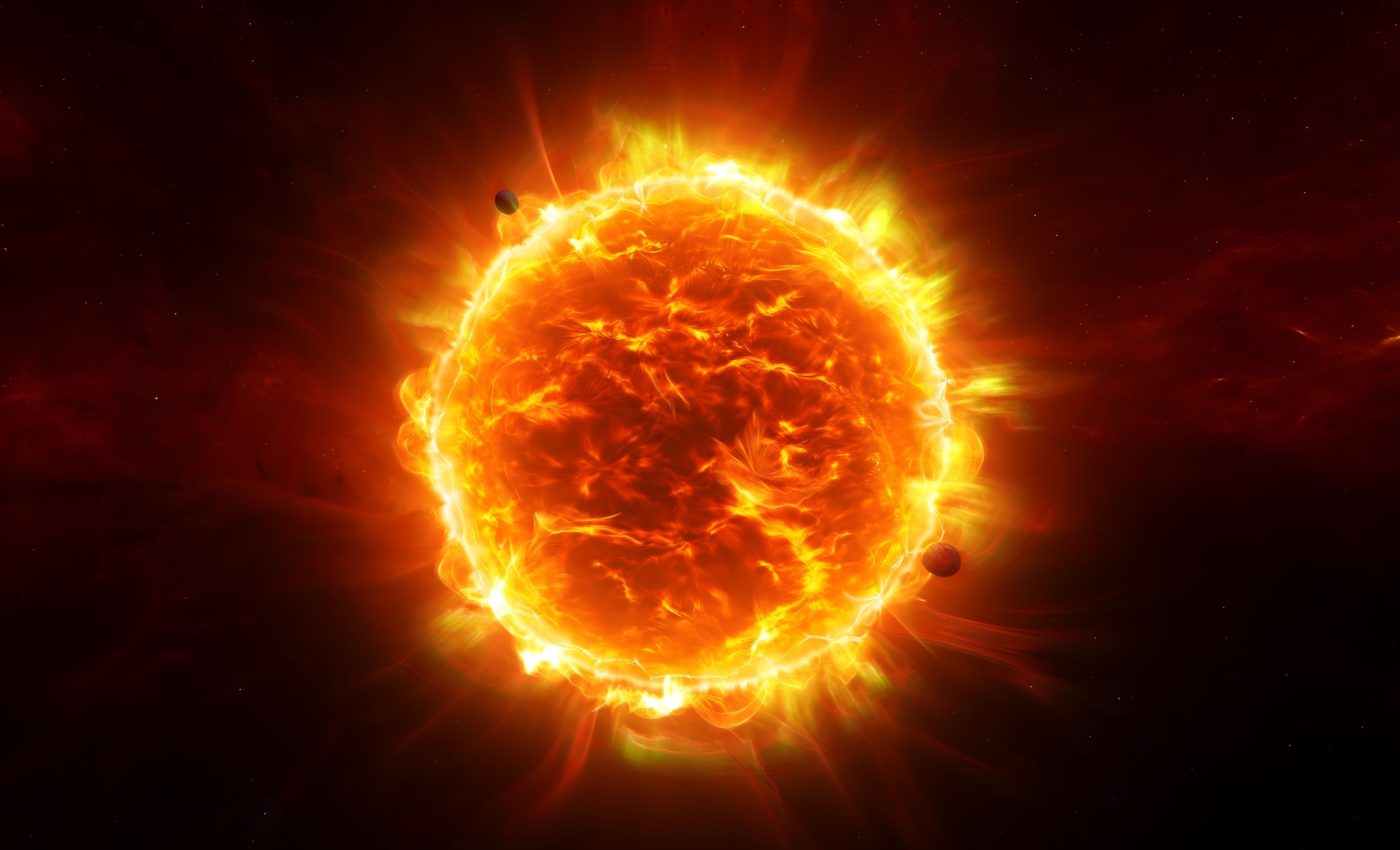
Half a million stars reveal how aging suns consume planets
A new study suggests that giant planets orbiting close to Sun-like stars rarely survive their host’s aging process. As stars evolve and begin to swell, these nearby worlds often vanish, drawn inward and destroyed by intense tidal forces.
The research, which included nearly half a million stars, revealed that only about 0.28 percent – roughly one in every 350 – still host a close-in giant planet.
Within that group, the team identified 130 planets and candidates, including 33 new discoveries, all orbiting stars nearing or in the red giant phase.
The work was led by Dr. Edward Bryant at University College London and the University of Warwick. His research focuses on exoplanet populations and how stellar evolution reshapes planetary systems.
Fewer planets near red giants
As stars move deeper into the red giant phase – a swollen, cooling late stage of Sun-like stars – nearby giants show up far less often.
The youngest evolved stars look much like main-sequence hosts, while the coolest, puffed-up stars drop to about 0.11 percent.
Those shares represent a type of occurrence rate – the fraction of surveyed stars that host a planet within a given range. Measured this way, the results point to real losses, not just detection quirks.
Surveys of unevolved stars usually find hot Jupiters around roughly half a percent of targets, depending on mass and period. Recent TESS-based results report similar levels for A-, F-, and G-type stars.
“This is strong evidence that as stars evolve off their main sequence they can quickly cause planets to spiral into them and be destroyed,” said Dr. Bryant.
Finding worlds through starlight
NASA’s Transiting Exoplanet Survey Satellite (TESS) – a sky scanning mission launched in 2018 – provided the brightness data. The method tracks transits, small, repeating dimmings that occur when a planet crosses its star.
The researchers sifted through more than 15,000 potential signals and kept 130 after stress-testing each candidate. That process removed false alarms caused by stellar variability and background binaries.
Turning candidates into confirmed planets requires mass measurements. Teams achieve this by measuring a star’s wobble, which reveals the planet’s gravitational pull and rules out lightweight stars and brown dwarfs.
How gravity seals planets’ fate
The likely engine is a tidal interaction – repeated gravitational stretching that transfers energy and angular momentum. Tides sap a planet’s orbital speed, causing the orbit to shrink until time runs out.
We have direct evidence that one hot Jupiter, WASP-12b, is already spiraling inward on a few-million-year timescale. It is the clearest case of orbital decay observed so far.
Theory supports the trend. Stellar evolution models predict much stronger dissipation in evolved stars than on the main sequence, which speeds up orbital shrinkage for close-in giants.
New research shows that both main tidal components – equilibrium and dynamical tides – grow more efficient as stellar envelopes expand. That change begins early in the subgiant stage.
Decline sharpens near the star
The greatest shortfall appears at the shortest orbital periods. This is where tidal forces are strongest, since tidal effects increase steeply as separation decreases.
This period-dependent decline matches tidal theory without special pleading. It also limits alternative explanations – such as formation differences – because metallicity and stellar mass alone cannot mimic such a strong period trend.
The team found that the youngest evolved stars still look normal. That hints at a kind of clock: once a star begins to swell, close-in giants disappear from the census within a relatively short epoch.
The future of our Sun
Our Sun will begin to expand in roughly five billion years. At that point, the inner Solar System will change in ways driven by tides and heat, not just by sheer size.
“Earth is certainly safer than the giant planets in our study, which are much closer to their star,” said Dr. Vincent Van Eylen from the Mullard Space Science Laboratory (MSSL).
Dr. Van Eylen noted that our planet might physically survive, but conditions for life would not. That difference matters, because survival of a rock is not the same as survival of a biosphere.
Statistics reveal the pattern
The sample is large and uniform, which cuts selection bias. It uses one photometric survey and a single, transparent pipeline to vet signals.
The key claims rest on population statistics, not one dramatic system. That is important, because single systems can be odd, while ensemble rates reveal the underlying physics.
Comparisons with main-sequence baselines are consistent. Giant planet rates around unevolved F- and G-type stars hover near half a percent, and that higher level appears in the youngest evolved subsample before the decline begins.
Proving planets through mass
The next step is to measure planetary masses, since mass determines how strongly a planet interacts tidally with its star and how quickly its orbit decays.
The brightness of these host stars allows for precision spectroscopy using current instruments, while longer observation baselines will be key as well.
Even slight shifts in transit timing could reveal orbital decay directly in a few of the closest planets.
The study is published in Monthly Notices of the Royal Astronomical Society.
—–
Like what you read? Subscribe to our newsletter for engaging articles, exclusive content, and the latest updates.
Check us out on EarthSnap, a free app brought to you by Eric Ralls and Earth.com.
—–













